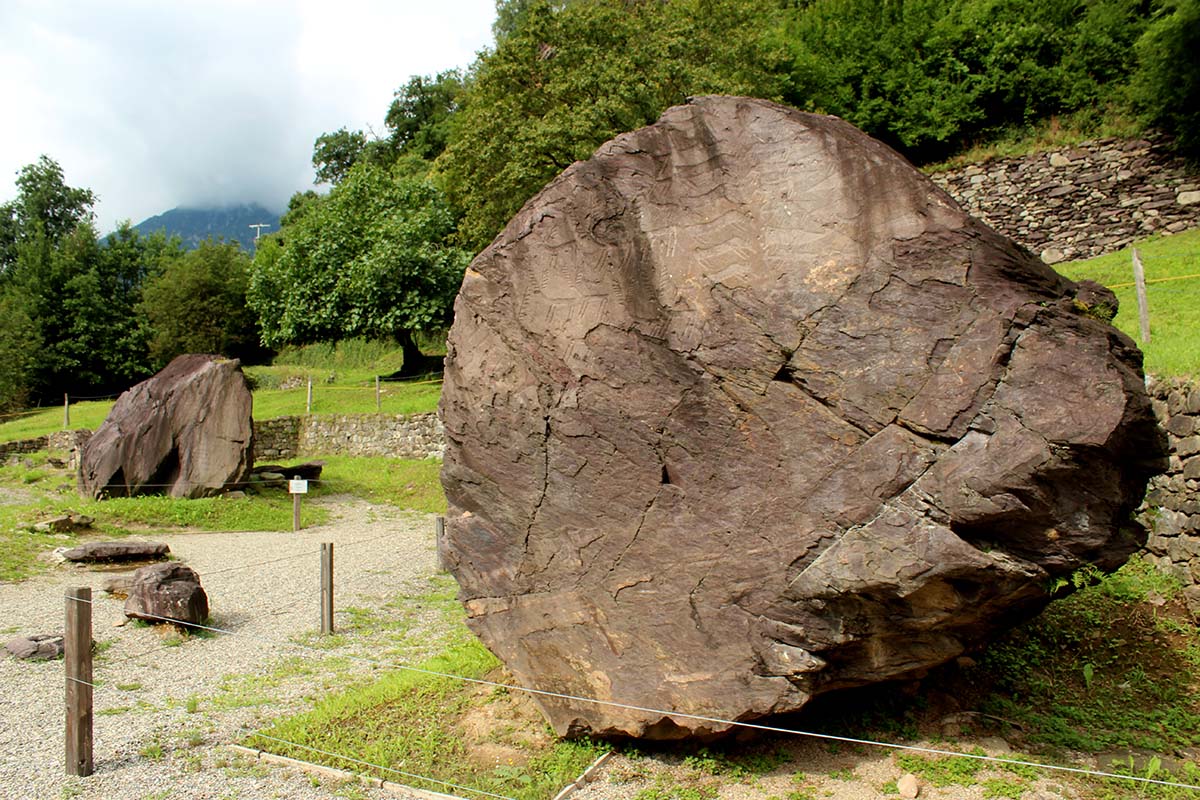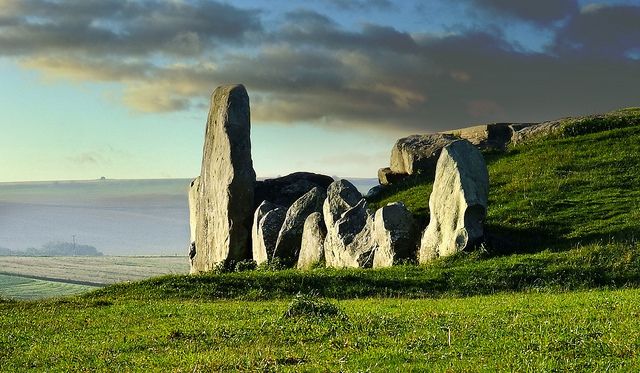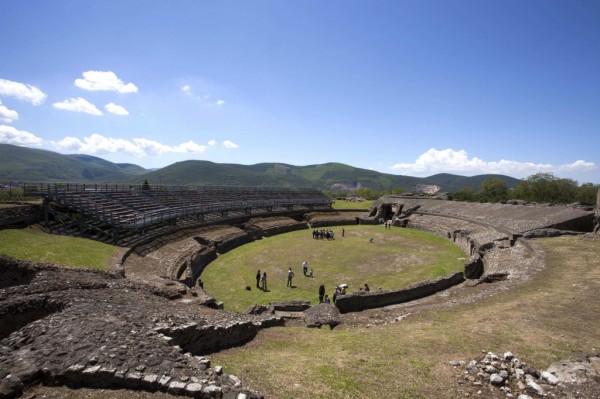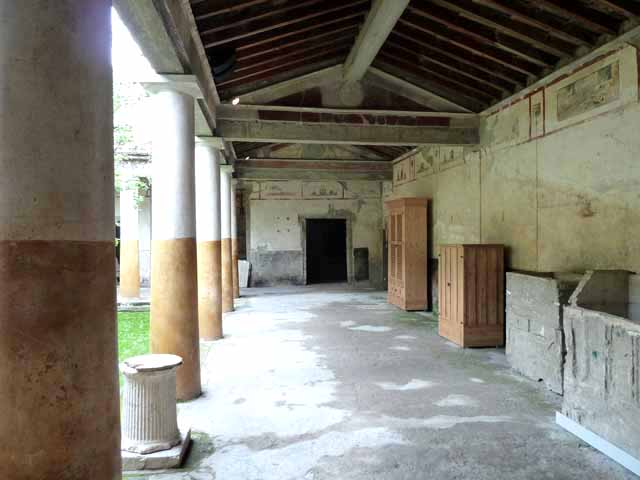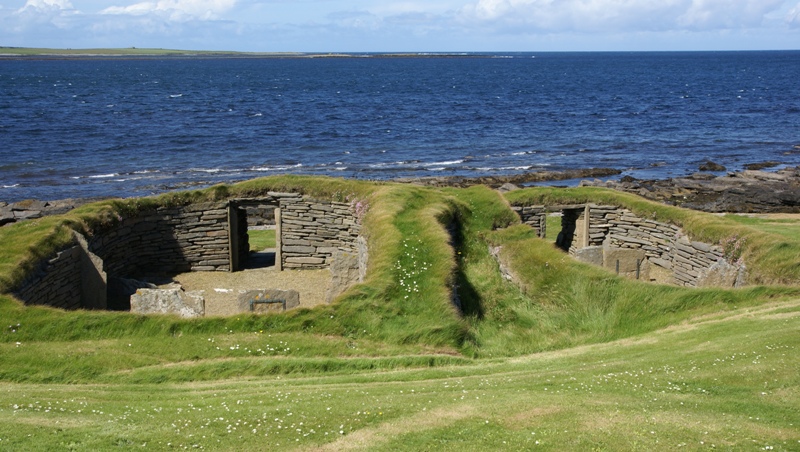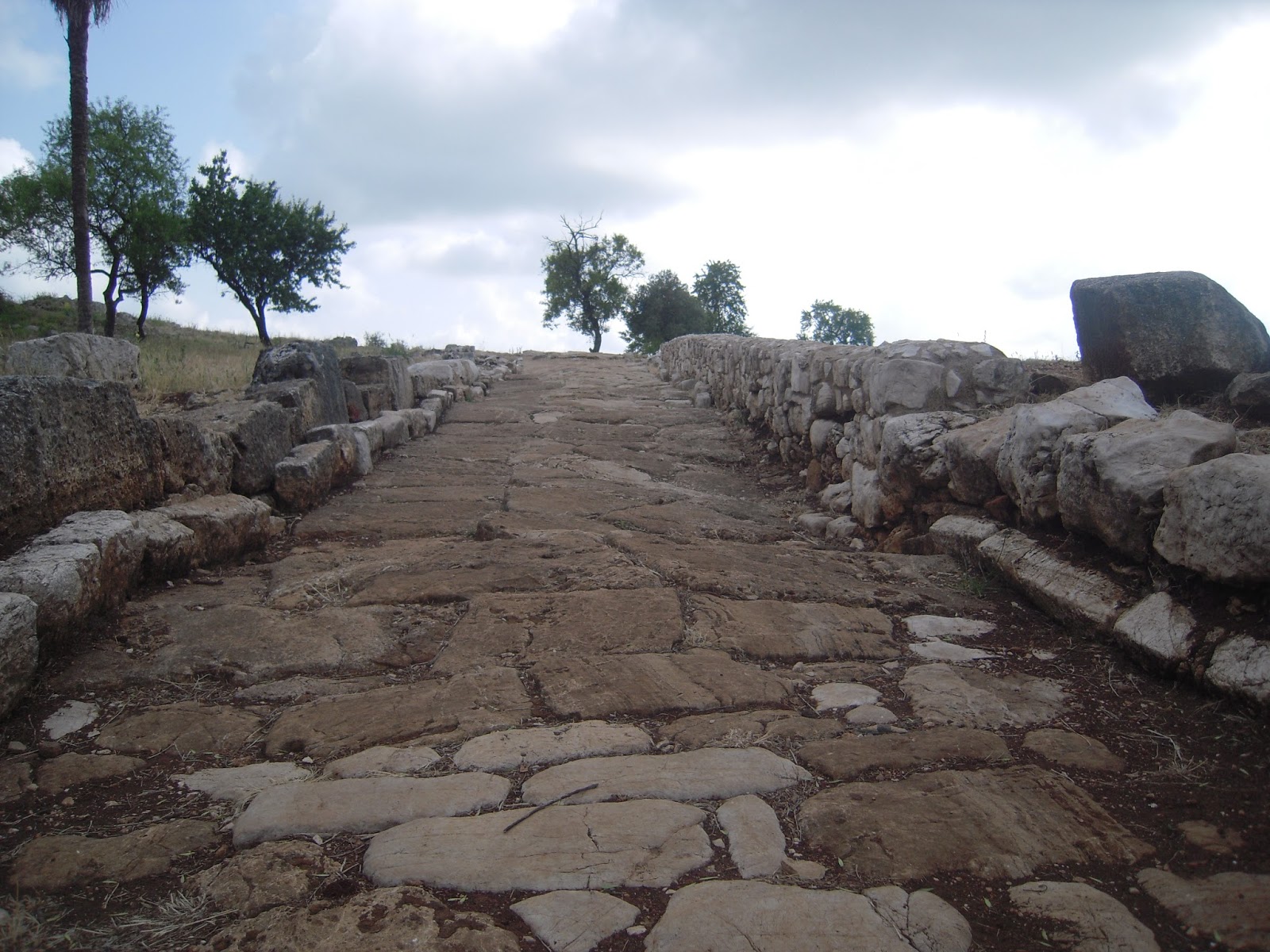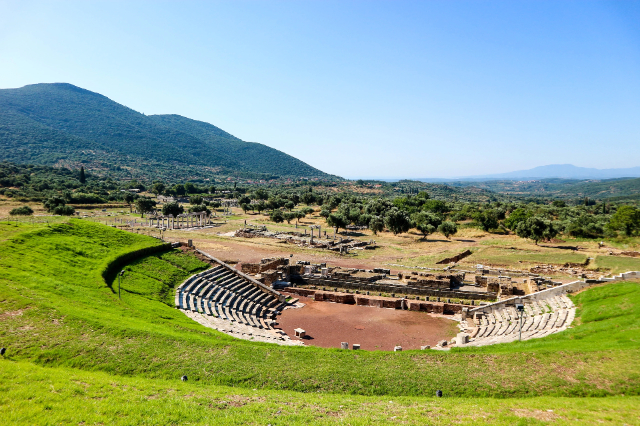The Massi di Cemmo National Archaeological Park is located in a glacial valley at the foot of a high and suggestive rock face. It is the first site of rock art in the Camuna area reported in 1909 by the geographer Gualtiero Laeng for the presence of two extraordinary painted boulders of the third millennium BC depicting figures of animals, weapons, anthropomorphs, scenes of ploughing and transport on a four-wheeled cart.
Recent archaeological excavations, started during the preparation of the Park and still in progress, have brought to light, around the boulders, a megalithic sanctuary in which the sacred space is surrounded by a walled enclosure and characterized by ornate stele.
The sanctuary, founded in the Copper Age on pre-existing levels of attendance of the ancient Mesolithic and Neolithic, lasted with progressive renovations that kept in use some of the stelae of the third millennium BC, until the late Roman age (late fourth-early second millennium BC; first millennium BC fourth/vth century AD), when it was deactivated by Christians who built the Pieve di San Siro near the place of worship and pagan ceremonial.
